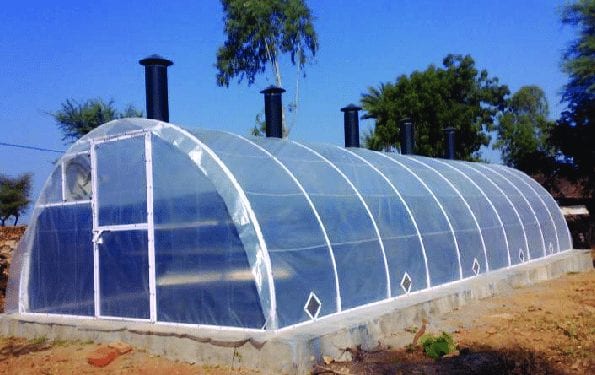The establishment of a drying system is closely linked to the climatic conditions of the micro-region. We can distinguish, by simplifying, three typical cases:
- in arid countries where temperatures are high and the air dry, traditional drying remains the best quality / cost of production compromise;
- in areas where there is strong sunlight but where humidity is high, direct and indirect solar tunnel dryer is an attractive alternative;
- In the limiting climatic conditions for solar drying (rainy harvest period), the use of hybrid systems seems to be the best solution. Solar energy only intervenes as a backup.
Of course, this typology should be qualified according to local climatic characteristics and the ripening periods of the fruits and vegetables. For example, in Senegal, the dry season from December to April offers optimal climatic conditions for solar drying. But the mangoes mature at the start of the rainy season around May. Solar drying then becomes difficult and uncertain during this period.
How much to invest?
How to finance a dryer? Who to borrow money from? How to repay it? What is the cost of producing the product? From what volume of production does the investment become profitable? What margin to take? So many questions that must be answered, at least in part, before embarking on the activity.
Equipping an improved drying system represents a heavy investment. From 5,000 Fcfa for the frame dryer up to 1,000,000 for the solar / gas dryer. Also, the choice of these materials must correspond to a real need and present a definite economic and technical advantage.
When it comes to self-consumption, the investment must be minimal. On the other hand, in a commercial logic, it is necessary to reason according to the market. Forecasting its profits allows you to roughly estimate the realism of the investment. For example, the shell dryer costs 13,000 FCFA. This dryer makes it possible to obtain 3 kg of dry onions per month. The material is generally depreciated after a year of use. In this specific case, the investment is realistic because the income generated ensures the rapid reimbursement of the equipment and a profit. But the profit is not always quantifiable. Purely economic reasoning does not take into account the increase in product quality, the reduction in working time, versatility and comfort of use. You must also think about your investment in all its aspects. The purchase price is one thing, but the lifespan of the equipment and the cost of its maintenance should not be neglected. The shell dryer is 4 times more expensive than the tent dryer for an equal area. But the latter has a much shorter lifespan, in the order of 3 to 4 years, and the polyethylene cover has to be changed every year (the most expensive element in the tent dryer).
With these two factors taken into account, the cost of the two dryers is roughly equivalent: over a long period.
To reduce the investment, we can use the construction materials available on site. For example, the 1 m by 2 m box dryer placed on a metal frame costs 60,000 CFA francs. The total price has been reduced to 40,000 with a wooden frame.
To finance the purchase of equipment, local aid agencies and international organizations can facilitate access to credit. It can sometimes be interesting to come together to invest in several and share the costs of purchasing the dryer.
How to specify the choice of material?
The previous questions allow you to select a few dryers suited to your needs. The final choice can be made on several criteria:
– The drying systems already present in the region
The solar drying experiments already developed in the region considered are a particularly interesting source of information for choosing a drying system. It is important to meet with users before giving advice or making your own choice. It is thus possible to assess the performance and the service life of the equipment, the difficulties encountered in carrying out the drying process, the maintenance problems, etc.
– The presence of craftsmen and qualified businesses nearby
The shell dryer, most indirect dryers and all hybrid dryers must be built by qualified personnel. In the absence of manufacturing skills, the choice is limited to the self-construction of very simple direct dryers.
– The dimension of the dryer
The dimensioning is first of all the calculation of the elements of the dryer: size of the collector, capacity of the drying chamber, air flow so as to obtain a material adapted to the drying needs over the season.
This step makes it possible to avoid serious errors: for example, to equip oneself with a material which is much too big or much too small compared to the need.
For more details, refer to the works cited in the bibliography and do not hesitate to consult the specialized organizations mentioned in the appendix. Depending on the size of the dryer required to dry the production over the harvesting season, we can then make the final choice between the two or three models selected previously.
Among the impressive number of existing solar dryers, some have not gone beyond the experimental stage, others have turned out to be poorly adapted to climates and local practices, and finally a few have given real satisfaction. If we only consider those who have been tested in Senegal, we can list more than thirty! Far from us the idea of carrying out here the catalog of all the invented materials. We have deliberately chosen to present here only certain dryers:
- usable by rural families and artisans,
- already experienced and used in the field,
- having proved their worth according to the data available to us.



